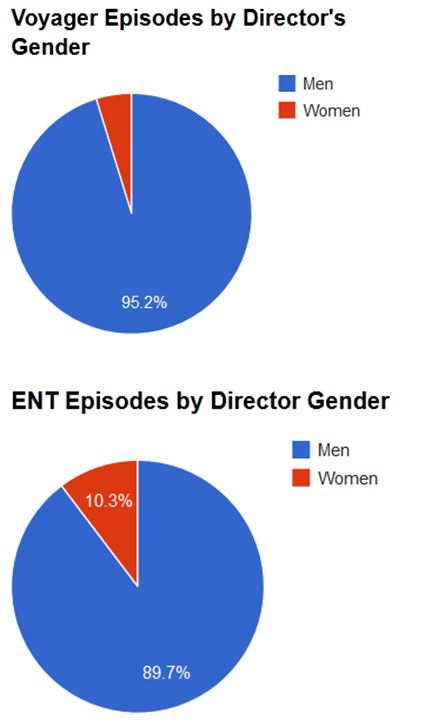This week I’m joining the amazing Valkyrie Directive and we’ll be jointly blogging about the women who worked behind the scenes on the various Star Trek series.
As she points out in her post intro-ing “Behind the Scenes Week”:
I firmly believe that the number of women working on a production, and how ‘important’ their positions are, has a direct correlation to the way women are presented on the screen. That’s not to say that men can’t write fantastic female characters! If that was the case then many of our beloved female characters wouldn’t exist, or be as awesome as they are. But I do think that the lack of women behind the scenes does impact what we see – or don’t see – on screen.
Star Trek has given us some amazing women characters and presented a vision of a future where women are presented as equal to men. But I’d be remiss if I didn’t call out the fact that in the five live-action Star Trek series, like pretty much all TV, women were underrepresented behind the camera.
I spent some time putting together stats and I wanted to start with the numbers on directors, because those were the most surprising/stark. I looked at how many episodes were directed by people of each gender and here’s what I found (all stats determined from data from Memory Alpha). Note: there is no graph for TOS because TOS had no episodes directed by women.


Directors, writers, and producers are the ones who end up calling most of the creative shots on a TV show. When women (and people of colour, LGBT people and people with disabilities) are excluded from these roles it can affect what we see on TV. When the show is Star Trek, presenting a utopian vision of the future, it should be even more important that the diversity of the creative team reflect the diversity of the future society it’s supposed to portray.
Of course, just because there haven’t been women doesn’t mean there haven’t been great, feminist episodes. As The Valkyrie Directive pointed out, men have created great women characters on Star Trek, just as they’ve directed amazing episodes.
But it’s fair to ask why the gender discrepancy was so big, and to suggest that should there be another Star Trek movie or TV show in the future, there needs to be a greater effort to include women in the highest levels of the creative process.
I like to imagine a day where the team making a new Star Trek series or movie and the characters they create will be just as diverse as the fans the show has inspired.
A recent report on women behind the scenes in Canadian TV states:
In this television-saturated environment, we may hope that equally dramatic changes would be visible in the participation of women and racialized minorities both behind the camera and on screen. Yet, despite widely-held assumptions about women’s progress, there is a significant disconnect between assumptions and actualities.
In my next “Behind the Scenes” week post I’ll be sharing my picks for the top 3 episodes directed by women.
For more on this topic, molly-became-an-engineer also did a breakdown of the Trek actors who directed episodes, by gender. Unsurprisingly, it represents a similar skew.









